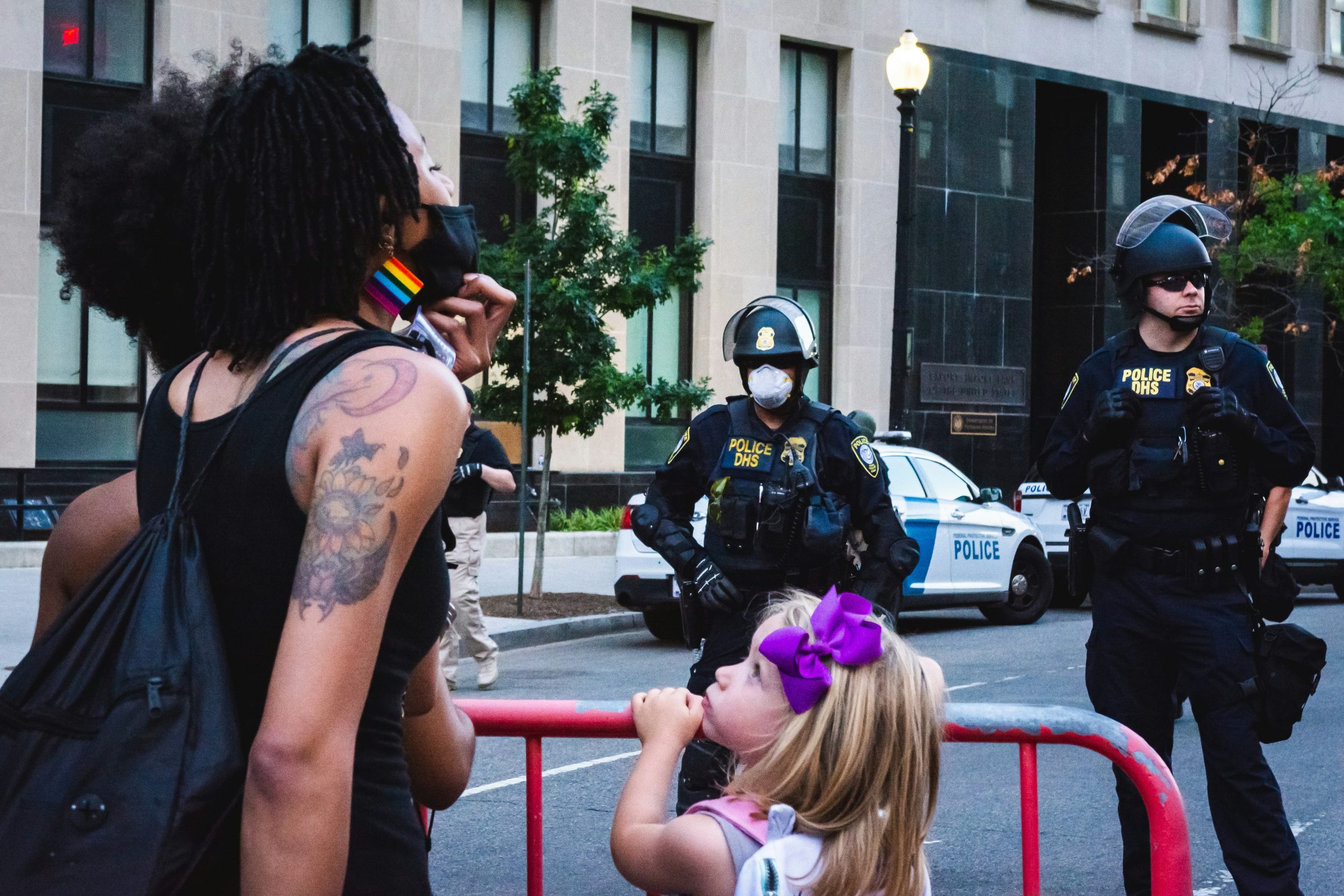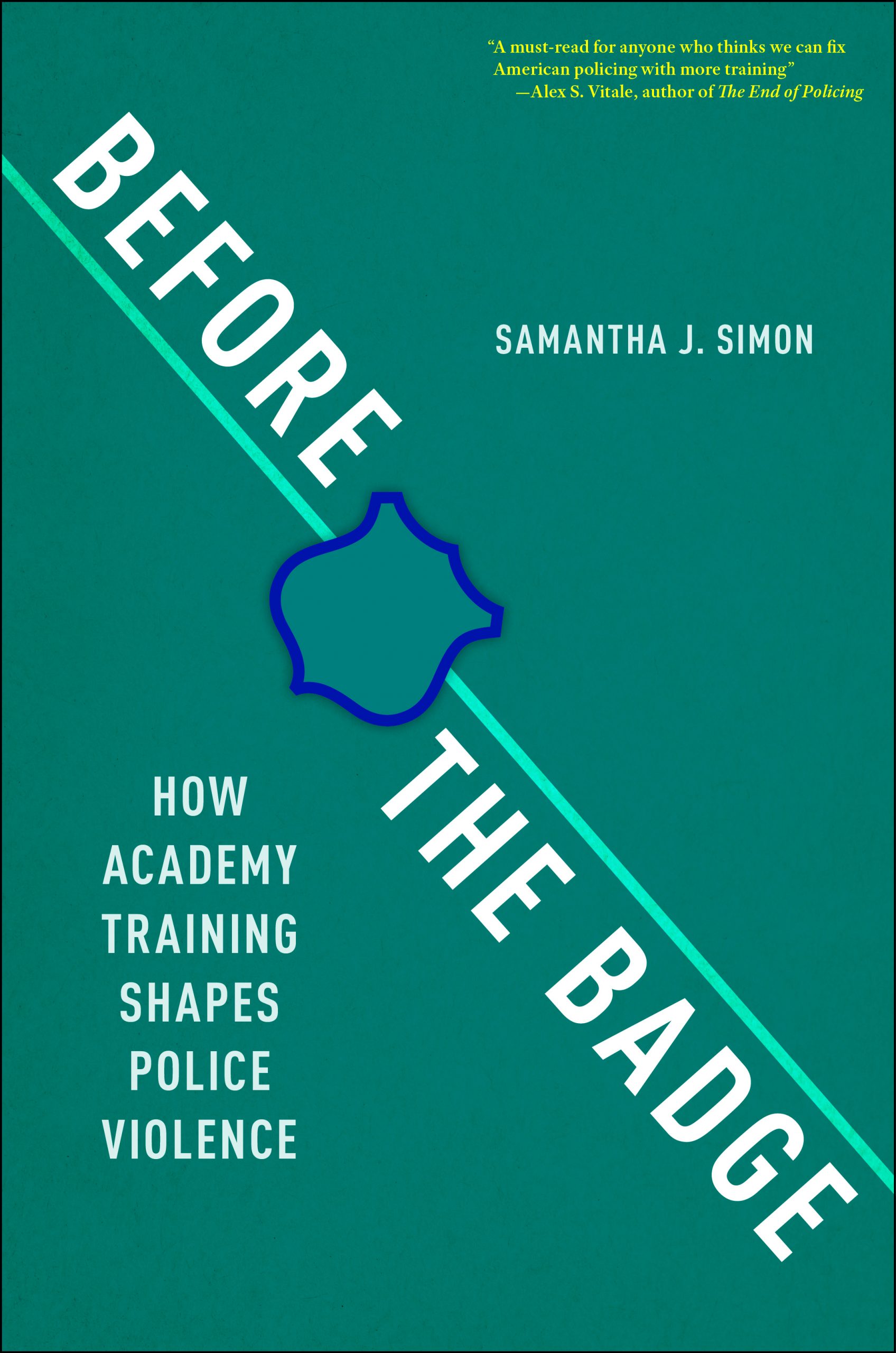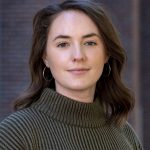In 2018 I began studying police training academies by using the participant observation techniques I practice as a sociologist. Like so many others, I urgently wanted to know why racist police violence persisted, and I knew that to answer this question, I would need to look to the organization itself to find out what ideologies, practices, and processes dictated who was allowed to be a police officer and how they were taught to do their jobs. I knew that, if nothing else, the training of new members could tell us something about the values, worldviews, and aims of contemporary U.S. policing.
Police officers often say that their social circles are almost entirely made up of other officers. They spend their days at work together, exercise at the department’s gym facilities together, grab drinks and eat together on the weekends, and go to each other’s homes for birthday parties and barbecues. Some of this, of course, is about proximity. But policing is also a particularly insular occupational group, one defined by an intense suspicion of others and a high level of group solidarity.
Cadets learn in police academy that part of being an insider is protecting themselves and the institution from outside threats. Cadets are taught that these threats endanger both their own and the larger institution’s survival. “Bad guys,” instructors warn, will use violence unpredictably and viciously for their own benefit, harming innocent civilians and specifically targeting police officers. They warn that the public will never understand their jobs, will resent and unfairly judge them, and will falsely accuse them of misconduct. The public, even when it does not present a physical threat to officers, is primarily framed as a mass of ungrateful, misinformed, manipulative, lying people who will constantly create obstacles to officers doing their jobs.
One of the key groups that police are taught to distrust and be wary of is activists. They are taught that activists will purposely target police with lies, belligerence, and baiting. Thus police are primed to treat activists with distrust and disdain before they’ve even spent a single day on the job. In the following, I explore how this distrust is instilled, and the impact that it has, by sharing some snapshots from my ethnographic fieldwork at Terryville and Rollingwood police academies (both pseudonyms for police academies in large metropolitan areas in the same southern state).
Throughout my fieldwork, activists were described as a major institutional threat to police departments. Officers repeatedly characterized activists as overly dramatic liberals who made illegitimate accusations about the police, did not understand or appreciate the intended function of the police, and purposefully provoked officers to capture a reaction on camera as a way to further their cause. At the time that I conducted this research, the word “activist” was most often used to refer to the Black Lives Matter movement, indicating that police officers were most concerned with activists who were organized around issues of racial injustice in policing. At the academy, instructors warned cadets that they would need to maintain their composure when dealing with activists so that they did not unintentionally contribute to these groups’ anti-police agenda.
Cadets were required to put these warnings into action by demonstrating that they could indeed keep their composure when confronted by activists or, at minimum, by concerned civilians witnessing an arrest. At Rollingwood, the cadets spent two full weeks at the end of the academy completing role-plays of scenarios they might face on duty. The scenarios ranged from resolving a verbal argument between two people in a park to being ambushed by a civilian with an AR-15 rifle. Rollingwood patrol officers volunteered as the actors in the scenarios and the evaluators of the cadets’ performance. If a cadet failed a scenario, they were required to repeat it.
During one scenario, the cadets initiated a routine traffic stop that turned into a drug-possession arrest. The cadets detained the driver, played by a male Latino officer, and frisked him by the side of their patrol car. While they did this, a group of six other officers stood around the “suspect” getting frisked, trying to antagonize the cadets by yelling at them and recording the interaction on their cell phones. One of these officers—a white man who looked to be in his thirties—accused the officer of racially profiling his friend, shouting: “Oh, so because he’s the only Mexican guy, that’s why you’re gonna search him? We’re out here every fucking night, but we’re white so you’re not gonna bother us, huh? You’re only gonna search the fucking Mexican guy, because you don’t like Mexicans!” He went on to shout, “This wouldn’t be happening if Hillary Clinton was president!” One officer held his phone with the flash on toward the cadets and yelled, “Hey, let my people go!” while another shouted that this was “police brutality.” In unison, they all chanted, “Racist! Racist! Racist!” at the cadets as they continued their frisk. Another repeatedly yelled that the Latino man’s rights were being violated. These imitations served both as a test of focus for the cadets and as a mockery of activists.
More from our decarceral brainstorm
Every week, Inquest aims to bring you insights from people thinking through and working for a world without mass incarceration.
Sign up for our newsletter for the latest.
Newsletter
Although activists were, in general, not taken seriously, most of the officers I met did not dismiss all claims of racial injustice in policing. There were certain police killings—Eric Garner, for instance, who was killed by an NYPD officer in 2014—that solicited criticism from officers. While these officers categorized certain cases of police killings as unacceptable, they often considered them one-offs and, thus, still felt that activists’ claims about racist patterns of police violence were illegitimate, despite the empirical evidence that proves otherwise.
This ambivalence came up in my interview with Joey, a newly minted police officer at Rollingwood. I watched Joey go through the academy, where he stood out as one of the top cadets in his class, and interviewed him three months after he graduated. I asked Joey what he thought about the tension between the public and the police, and in his response, he began by blaming the media but then added that in certain situations, such as the police killing of Eric Garner, the police officer’s actions were inexcusable and a blatant violation of law: “That horrible incident in New York where the cop put some guy in a chokehold, even though chokeholds have been banned since like 1991 or ’94, and you put some guy in a chokehold and the guy died, like, the cop is 100 percent at fault for that. First of all, you did something you didn’t know how to do because you didn’t let him go, and you did something that’s been outlawed for fifteen years.”
Joey faulted NYPD officer Daniel Pantaleo for Eric Garner’s death, pointing specifically to a lack of tactics competence and a violation of law. That officer, Joey explained, was “100 percent at fault” for Garner’s death. A few minutes later, though, when I asked Joey if he thought that there was “any legitimacy to some of the things the media says or any of the gripes that activist groups have about the police,” he replied, “I mean, honestly, I would say no.” He elaborated:
They’re taking one or two instances and then trying to, like, make it a stigma, when it’s not. Like, Ferguson, right? People think it was all about Michael Brown, Michael Brown, Michael Brown, but it wasn’t. So, what was happening in Ferguson was, like, cops were pulling over Black people, and you know, Black people had warrants, all that, and they would, like, give them every citation they could, knowing full well they couldn’t pay for it, which would create more warrants, and then they would take them to jail. That was happening across the department. And so that’s why there were protests in Ferguson. But, like, so many people point to that Michael Brown shooting, which was 100 percent legitimate, per scientific evidence. But once again, it was like ‘cop killed a Black male,’ and that was all everyone zoned in on.
Even when officers thought that activists’ claims about racism in policing might be legitimate, they were still critical of the methods, strategies, or tone used by activists to advocate for their causes. This came up in my interview with Bill when he described activists, including those in the Black Lives Matter movement, as “bullies” who get others to “bow down” to their cause by threatening to label them as racists. He went on to explain: “Maybe there’s genuine concern on what their cause or feelings are, rightfully so. But I think things are getting hijacked, and people are getting just bullied. They’ve bullied their way onto the pulpit to get themselves there, to get their voice heard.” In response, I asked Bill if he felt that any of the claims made by Black Lives Matter activists were legitimate. He explained that while the police were responsible for some “bad shoots,” the public was too quick to judge officers’ actions without adequate information.
Bill did not absolve the police of blame, and he did feel that the police had contributed to the anger expressed by contemporary social movements advocating for racial justice. However, he was critical of activists’ tone, explaining that activists had “bullied” their way into public debates about policing. He also felt that the media and the public unfairly judged police officers without full and complete information and that once someone had been labeled a “sexist” or a “racist,” there was no chance of public forgiveness.
Although the majority of the instructional content and discussions about activists at these academies revolved around issues of racial justice in policing, there was also an overarching contempt toward any kind of liberal activism. Sometimes this was playfully directed toward me because I was attending graduate school in a city with a national reputation for being particularly politically liberal. Once, for example, when I returned to the Rollingwood academy after some time away back on campus to attend meetings, Rob joked, “How was your campus protest?” and followed up by asking, “How many statues did you burn down?” I played along, replying, “Just two.”
Other times, instructors explicitly mocked activists during formal academy training. For example, on OC Spray Day at Terryville—when cadets are taught about how to use pepper spray (OC stands for “oleoresin capsicum”)—Kyle showed several YouTube videos of crowds getting OC sprayed to illustrate the “physiological reaction” it solicits. He then showed pictures and videos taken at Occupy protests, including one in Denver, Colorado, and another in Portland, Oregon, when officers used OC spray on the crowds of protestors. “These people are not there to peacefully protest,” Kyle explained, going on to say that the protestors were there to “fight” law enforcement and had designed their signs as weapons to resist officers. He showed a picture of officers in Portland using tear gas and OC spray on the crowd and joked, “Look, they’re watering the hippies.” He specifically pointed out one man in the photo who was videotaping, explaining that “these people” videotaping always try to “make us [the police] look as bad as possible.”
At the end of the class, Kyle showed a video of the Occupy protests in Portland in which a man being interviewed reported that officers sprayed a woman next to him with OC spray and then dragged her by her hair to arrest her. The man told the reporters that he was fearful he would be “bludgeoned” by the police at any moment. Kyle mocked the man featured in the video for several minutes. “I’m sure they told them to leave one hundred times,” Kyle said. “Don’t be a part of history, guy. Watch at home. Go home in your Prius if you’re so scared of being bludgeoned.”
In his instruction, Kyle mocked the activists’ goals and trivialized the physical effects of police responses to protests. He conceptualized these activists as adversaries of the police, explaining to cadets that these activists had developed weapons out of their signs to “fight” the police. Even when activist movements were not directly advocating for police reform, then, they were still considered to be an institutional threat to the police.
Police academy training brings cadets into the new world they will occupy once they graduate and begin working patrol. In this world, bad guys lurk around every corner; anti-police attackers can pop up anywhere to ambush officers; the media intentionally fabricates damaging narratives about the police for profit; activists goad officers into reactions to further their anti-police agendas; and the public, at best, expresses no gratitude for officers’ sacrifices to protect them and, at worst, discriminates against officers and falsely accuses them of misconduct.
Cadets are taught that these groups should be thought of as outsiders, fostering a constant sense of danger and insecurity that makes these cadets feel deeply protective and defensive from the outset. If everyone is out to get you, in one form or another, it becomes easy to legitimize violent responses and dismiss any criticism.
Within this frame, the possibility that the police may, in fact, participate in patterns of racist enforcement is swiftly dismissed as a targeted attack against the police by the liberal media. This worldview makes the institution incredibly durable and resistant to any kind of change or reform, making it an essential component of the socialization of state violence.
Adapted from Before the Badge: How Academy Training Shapes Police Violence by Samantha J. Simon (NYU Press).
Image: Gayati Malhotra/Unsplash


